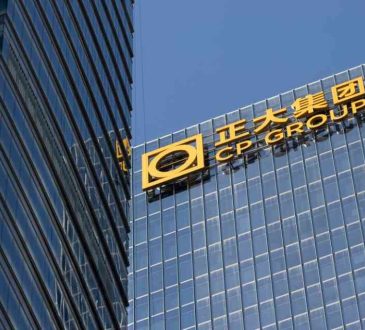Workplace Human Resources Predictions for 2022

The primary workplace challenge of 2022 will be around talent: Attracting talent, getting the best from the talent you hire, and retaining talent. The work landscape has shifted dramatically and companies need to change with it. There continues to be an extreme skilled-worker shortage that started even before the recent pandemic. This shortage was due to changing demographics, but has been amplified by older workers voluntarily quitting their jobs and retiring early to avoid the increased risk from COVID-19 and its variants as well as to take advantage of increased savings and record returns on retirement funds over the past few years. Workers that remain in the workforce are demanding better pay and more flexible working arrangements, which for many includes the ability to continue to work virtually.
How to Optimize Employee Engagement in the Hybrid Workplace
The first step is to realize that pre-pandemic workplace arrangements in which employees are expected to be in a central office 40 hours a week will NOT likely return. Employees have proven that working remotely works, in fact, a study by Microsoft Office found 81 percent of workers at home to be more productive than at the office and a study by the Center for Advanced HR Studies at Cornell University, found virtual workers to be more satisfied than their in-office co-workers. And research by Robert Half International found that 75 percent of employees say a flexible or virtual work arrangement would cause them to choose one job over another.
This means that going forward companies have to be sensitive to the varying needs of its varying workforce. Virtual employees need to be embraced and accommodated to have their needs met so that they are successful. In my book, 1001 Ways to Engage Employees, I rank the top three variables that most impact employee engagement for employees regardless of where they are located as being: 1) Recognition, 2) Career Development and 3) One’s Immediate Manager.
Recognition, or more specifically, recognition for high performance, has been shown to drive 56 percent of engagement for employees. It’s a simple concept: “thank workers when they do a good job,” yet only 12 percent of employees report receiving such thanks or praise where they work. Contrast that with my findings that 85 percent of today’s workers feel overworked and underappreciated and you start to see the grim reality most employees face in the workplace.
Career Development, or, more specifically, a continual focus on career growth and development, makes up the second most important aspect of employee engagement. This isn’t an occasional training class or periodically being promoted, but rather the daily journey of learning, job skills and networking that puts you on the course you most want to travel in your career—and your manager’s help in getting you there.
One’s Immediate Manager rounds out the top three drivers of employee engagement. The Gallup Organization has found that one’s manager is the most important person at work for most every employee and if that person shows through his or her behaviors that you are important, that is, how the person listens, encourages, and supports you, it allows you to do your best to excel on a daily basis. “If you have a good boss, you have a good job” is true the world around.
Focusing on these three elements can serve as a great starting point for organizations who truly want to “move the needle” in creating greater employee engagement in their organizations for all employees be they working from a central office or virtually.
How to Improve Talent Retention in the Hybrid Workplace
According to a study done by HR Solutions, 60 percent of virtual workers have a greater intent to stay than traditional workers, so prioritize allowing them to continue to work remotely. Beyond that, talent retention is not a great mystery. Find out what the workers you most need most want and then create a plan to provide them exactly that when they perform well. Most companies assume that compensation is the top, if not only, priority employees have, but this is a misconception.
Money is important and we all need to be able to pay our bills and live a life to which we are accustomed, but it is not the end-all for today’s workers. In fact, for the Millennial Generation, which currently makes up almost 75 percent of the workforce, 88 percent don’t feel money is their main motivator and 78 percent say they will work for less if challenged. What do they want?
According to the Great Place to Work® institute, more than any other generation, Millennials are seeking intangibles such as purpose, flexibility and transparency and they are not afraid to quit if their employer doesn’t meet those expectations. Millennials also want to have fun at work. According to a report by Future Workplace, 39 percent of HR professionals rate Millennials as “fun loving.”
Three Additional Predictions for the Future of Work
1) Ongoing Hybrid Conflicts. Understanding and valuing hybrid work will continue to be a challenge as what companies think hybrid work should be and what workers think it should be will differ (each viewing hybrid work from their own perspective).
2) Greater Async Operations. There will be a greater increase of asynchronous operations, that is, activities that workers can do as best fit their own schedule, not a fixed schedule. For example, meeting presentations can be recorded, viewed and commented on independently by all attendees, using the actually meeting time to summarize and focus on questions.
3) Expanded Geographical Hiring. Almost every company will expand the geographical footprint in which it hires. Work has become a state of mind more than a place to be, allowing companies to be able to drastically expand where they hire workers. Work will go to those workers that can best do it, regardless as to where they are located around the world.
Written by Dr. Bob Nelson.
Have you read?
# Best Citizenship and Residency by Investment Programs.
# Richest People in New York and Their Net Worth, 2022.
# The World’s Top 10 CEOs Over 70 Years Old.
# These are the world’s most and least powerful passports, 2022.
# Case Study: LVMH’s Bernard Arnault, Apple’s Tim Cook, and Elon Musk.
Bring the best of the CEOWORLD magazine's global journalism to audiences in the United States and around the world. - Add CEOWORLD magazine to your Google News feed.
Follow CEOWORLD magazine headlines on: Google News, LinkedIn, Twitter, and Facebook.
Copyright 2025 The CEOWORLD magazine. All rights reserved. This material (and any extract from it) must not be copied, redistributed or placed on any website, without CEOWORLD magazine' prior written consent. For media queries, please contact: info@ceoworld.biz








